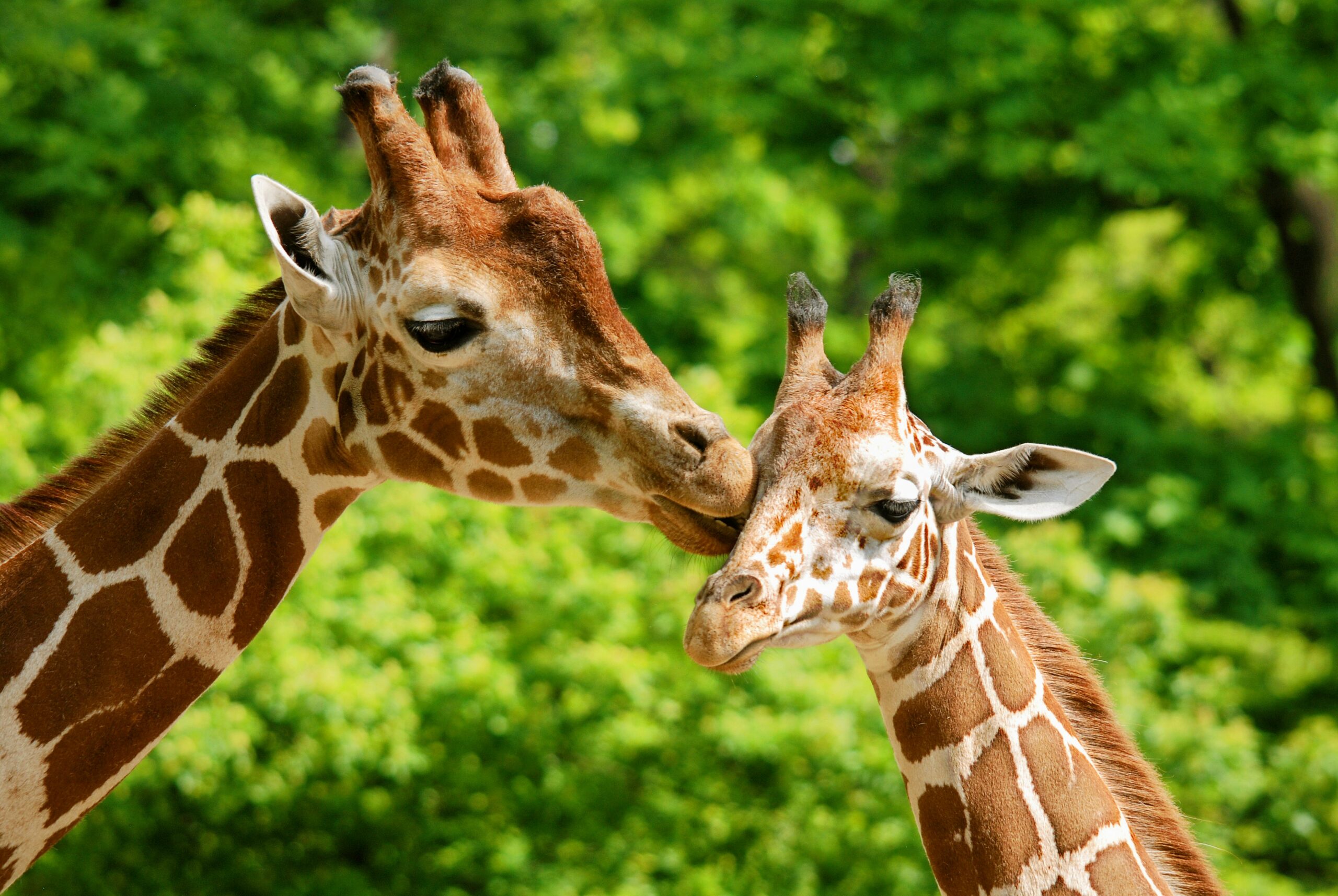
26 interesting facts about giraffes
- 👁️ 263
Giraffes are majestic creatures that have been fascinating people for centuries. With their incredibly long necks and spots that resemble a fingerprint, they are truly one of a kind animals. Here are some interesting facts about giraffes that you may not know:
- Giraffes are the tallest mammals on earth. They can reach a height of up to 18 feet, which is the equivalent of a 5-story building.
- Giraffes are native to Africa and can be found in savannas, woodlands, and grasslands.
- A giraffe’s neck is incredibly strong and flexible, making it easier for them to reach leaves and branches high up in trees.
- A giraffe’s tongue is approximately 45 cm long and is blue-black in color.
- Giraffes have the ability to run at speeds of up to 35 mph, making them one of the fastest mammals on land.
- The spots on a giraffe’s coat are unique to each individual and no two giraffes have the same pattern.
- Giraffes have a very small brain in comparison to their large body size.
- Giraffes sleep very little, only about 20 minutes a day, and typically do so standing up.
- Giraffes are herbivores and feed on leaves, flowers, and fruits. They can eat up to 75 pounds of vegetation in a day.
- Giraffes have no vocal cords, which means they cannot make any sounds.
- Giraffes are social animals and form herds of up to 20 individuals.
- Giraffes use their long necks to defend themselves against predators like lions, hyenas, and crocodiles.
- The giraffe’s heart is over 2 feet long and weighs approximately 25 pounds.
- Giraffes have a unique way of communicating, called “necking”. This involves two giraffes pushing their necks against each other in a display of dominance.
- Giraffes have a gestation period of approximately 15 months and give birth to a single calf, which can weigh up to 150 pounds.
- Giraffes have a lifespan of approximately 25 years in the wild.
- Giraffes are classified as a vulnerable species by the International Union for Conservation of Nature (IUCN) due to habitat loss and hunting.
- Conservation efforts are underway to protect giraffes and their habitats, including anti-poaching initiatives and the creation of protected areas.
- The giraffe’s tall stature allows it to see potential danger from a long distance and give it a warning to the herd.
- A giraffe’s neck contains only 7 vertebrae, just like a human neck, but they are much larger and more elongated.
- Giraffes have a unique way of swallowing their food. They have to spread their front legs wide apart and lower their neck in order to swallow.
- A giraffe’s tongue is tough and muscular, and it can wrap around and manipulate food, which helps them to pluck leaves from trees.
- Giraffes are active during the day and spend most of their time feeding and walking.
- Giraffes have large, dark eyes that help them to see great distances and detect predators.
- There are currently two species of giraffes recognized: the Northern giraffe and the Southern giraffe.
- Giraffes are the national symbol of Cameroon and appear on their coat of arms.
Giraffes are majestic creatures that have been fascinating people for centuries. With their incredibly long necks and spots that resemble a fingerprint, they are truly one of a kind animals. Here are some interesting facts about giraffes that you may not know: